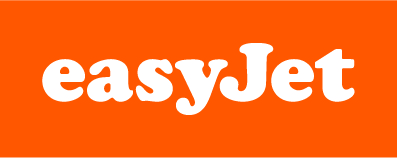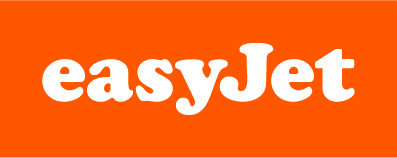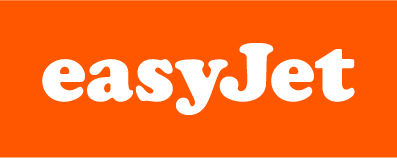Information
-
Please select the airport
- ATH
- CFU
- CHQ
- EFL
- HER
- JMK
- JSI
- JTR
- KGS
- KLX
- PVK
- RHO
- SKG
- VOL
- ZTH
-
Conducted on
-
Prepared by
-
Assessor Name
-
Location
-
GHP
-
Parking Stand Number
-
Flight Number
-
Departure
-
Arrival
-
Aircraft Reg.
-
Aircraft Type
Basic Operating Requirements
-
Appropriate hearing protection is used by ground crew
-
Appropriate safety footwear is worn by ground crew
-
High visibility/reflective clothing is worn and fastened
-
Passengers are supervised on the ramp
Actions Prior to Arrival
-
FOD removed and properly disposed of
-
Stand is clear of all equipment
-
GSE is checked for serviceability
-
Arrival route is correctly prepared (domestic/international)
-
Airbridge is fully retracted and parked in the correct position
-
Passenger boarding devices/walkways are free of FOD/contamination
-
Airbridge is checked for serviceability
-
Doors/safety barriers correctly utilised on the airbridge
Actions During and after Arrival
-
Correct hand signals are used by marshaller
-
Wands/Bats are used for marshalling and all signalling (wands shall be illuminated in low visibility and hours of darkness (and batteries checked before use)
-
Guidance system is activated for correct aircraft type
-
Guidance system emergency stop button manned
-
Ground crew wait until the aircraft has stopped, anti-collision lights are off, engines are spooling down and ‘thumbs up’ is given, before ground crew approach aircraft
-
If APU was inoperative, were the correct procedures followed by ground crew on arrival
-
Aircraft is chocked correctly
-
Pilot is notified verbally/visually of chocks in place
-
Aircraft is coned correctly (in accordance with local procedures)
-
Aircraft inspected for damage prior to positioning of GSE
Passenger Boarding/De-boarding devices
-
Passenger boarding device auto levelling system is deployed and operating
-
Passenger boarding device canopy extended
-
Where passenger stairs are towed, they are disconnected before being manually positioned to the aircraft
-
Brakes are set on passenger stairs
-
Stabilisers are deployed on passenger stairs
-
Safety rails, once in position, are deployed and secure on passenger stairs
-
Ground crew knock on door and give thumbs up to crew when passenger door is ready to be opened
-
Step permit process is followed when repositioning/removing passenger boarding devices
Ground Service Equipment (GSE)
-
GPU/FEGP correctly connected
-
GPU/FEGP power cable support strap/lanyard used
-
Ground crew adhere to the ‘no seat, no ride’ rule
-
Ground crew do not walk, stand, or sit on moving GSE
-
GSE is driven/manoeuvred appropriately
-
Motorised GSE complete required brake checks before positioning to the aircraft
-
GSE is correctly positioned (not inside the aircraft, unless specifically designed to do so)
-
Belt loader is lowered with handrails stowed when approaching the aircraft (unless fixed in position)
-
No touch policy is adhered to
-
Clearances are checked when opening/closing cargo/passenger doors
-
Stabilisers deployed after positioning GSE to the aircraft
-
Safety rails (including trombones) fully deployed and secured after positioning GSE to the aircraft
-
Brakes are set on GSE when positioned at the aircraft or unattended
-
Chocks are positioned on GSE
-
Ground crew do not walk between trailers
-
GSE not driven/manoeuvred under the aircraft wing and fuselage (unless designed or required to do so)
Ambulift
-
GSE is driven/manoeuvred appropriately
-
Motorised GSE complete required brake checks before positioning to the aircraft
-
Guide person/banksperson is used where required
-
GSE is correctly positioned (not inside the aircraft, unless specifically designed to do so)
-
No touch policy is adhered to
-
Clearances are checked when opening/closing cargo/passenger doors
-
Stabilisers deployed after positioning GSE to the aircraft
-
Safety rails (including trombones) fully deployed and secured after positioning GSE to the aircraft
-
Brakes are set on GSE when positioned at the aircraft or unattended
-
Chocks are positioned on GSE
-
GSE not driven/manoeuvred under the aircraft wing and fuselage (unless designed or required to do so)
-
Customers secured in ambulift
Toilet & Water
-
GSE is driven/manoeuvred appropriately
-
Motorised GSE complete required brake checks before positioning to the aircraft
-
Guide person/banksperson is used where required
-
GSE is correctly positioned (not inside the aircraft, unless specifically designed to do so)
-
No touch policy is adhered to
-
Clearances are checked when opening/closing cargo/passenger doors
-
Stabilisers deployed after positioning GSE to the aircraft
-
Safety rails (including trombones) fully deployed and secured after positioning GSE to the aircraft
-
Brakes are set on GSE when positioned at the aircraft or unattended
-
Chocks are positioned on GSE
-
Appropriate PPE worn
-
Toilet and water not serviced by the same individual
Fueling
-
Emergency exit paths kept clear for fuelling vehicles
-
Bonding/earthing cable connected prior to fuelling
-
Visual safety aids in place to prevent GSE collision with fuelling equipment (cones/flags)
-
Accessible emergency fuel stop button (on stand/in vehicle)
-
Fuelling with passengers on board easyJet/local rules followed
Unloading Aircarft/Loading Aircraft
-
Baggage is handled with appropriate care
-
Curtains are closed and fastened on baggage trailers when transporting baggage/not in use
-
Hold security search has been conducted and confirmation given to the flight crew
-
Baggage correctly reconciled prior to departure
-
Aircraft is loaded in accordance with loading instruction
-
Loading form and certificate and loading instruction correctly completed
-
Hold height limit line adhered to
-
Nets secured prior to closure of hold doors
-
Between unload and onload compartment nets are secured inside aircraft compartments and not left hanging outside
EMA's
-
EMAs loaded in separate compartment from baggage
-
EMAs correctly secured in hold
-
EMAs correctly inhibited
-
EMAs loading form completed
Pre Departure Checks
-
Stabilisers are retracted on passenger stairs prior to removal
-
Safety rails are retracted on passenger stairs prior to removal
-
The weather door is closed when the loading bridge is stowed
-
Cones are removed and correctly stowed
-
Stand is clear of all equipment/personnel prior to pushback
-
The pushback tractor and/or towbar/towbarless (TWL) tractor is suitable for the specific aircraft type
-
The nose gear steering bypass pin is installed prior to towbar/TWL connection to the aircraft
-
Towbar is correctly secured to the aircraft prior to connection of pushback tractor
-
Pushback tractor/towbarless tractor (TWL) approaches nose gear parallel to fuselage
-
Pushback tractor is correctly secured to towbar/ towbarless tractor (TWL) is correctly secured to the aircraft
-
Banksman used for final positioning of pushback tractor
-
Where the towbarless tractor is used, aircraft is not lifted until all equipment has been removed
-
Chocks removed and correctly stowed after connection of pushback tractor
-
Aircraft inspected for damage following removal of GSE and all doors are closed and secured (walkaround can be completed prior to removal of passenger boarding device at D1L. D1L to be checked visually after removal of passenger boarding device)
-
All service panels checked and closed with handles flush to the fuselage
-
Ramp area checked for FOD prior to pushback and identified FOD removed
-
Headset connected and communication established with flight crew or appropriate hand signals used
-
Ground power disconnected after verbal/hand signal approval is received from flight crew
-
Ground crew stand clear of the aircraft when anti-collision lights are illuminated/engines spooling up
-
Headset operator gives all clear signal to pushback tractor driver/wing walkers that the aircraft brakes have been released and flight crew have given the approval for pushback
-
Wands/Bats are used for marshalling and all signalling (wands shall be illuminated in low visibility and hours of darkness (and batteries checked before use))
-
Headset operator is positioned a safe distance from the nose and tractor during pushback
-
The towbar is disconnected properly
-
Headset operator has removed the nose gear steering bypass pin
-
Headset operator has disconnected headset and closed the access panel
-
The pushback tractor has moved clear of the aircraft path and stopped in a safe position, visible to flight crew
-
Headset operative clearly displayed steering bypass pin to flight crew
Additional comments please comment below:
-
undefined
Summary
-
undefined
-
Add signature
-
Report has been forward to
- GHP Station Manager
- easyJet Responsible AOCM










